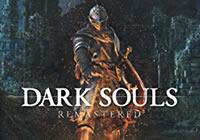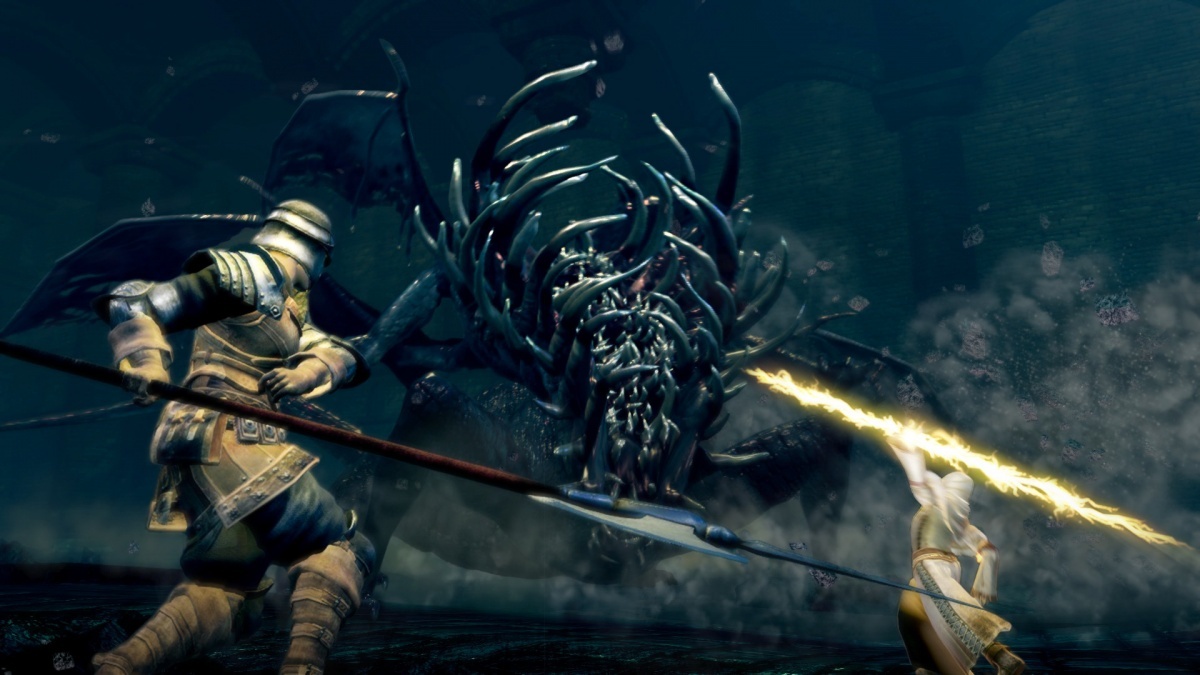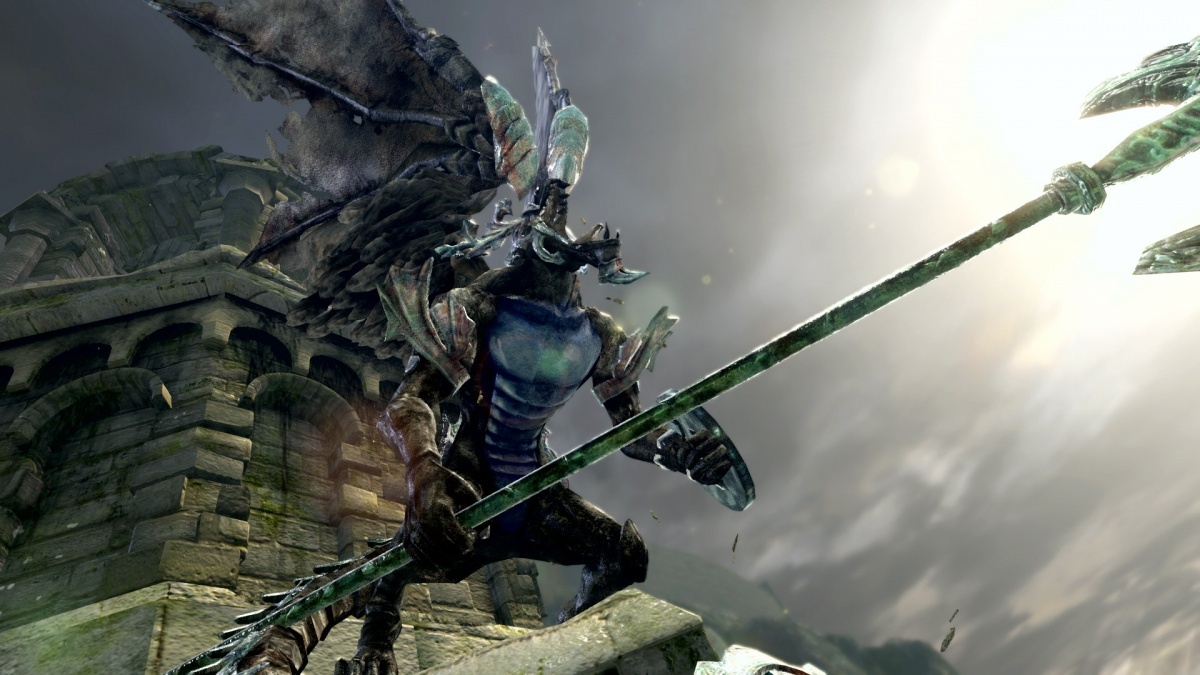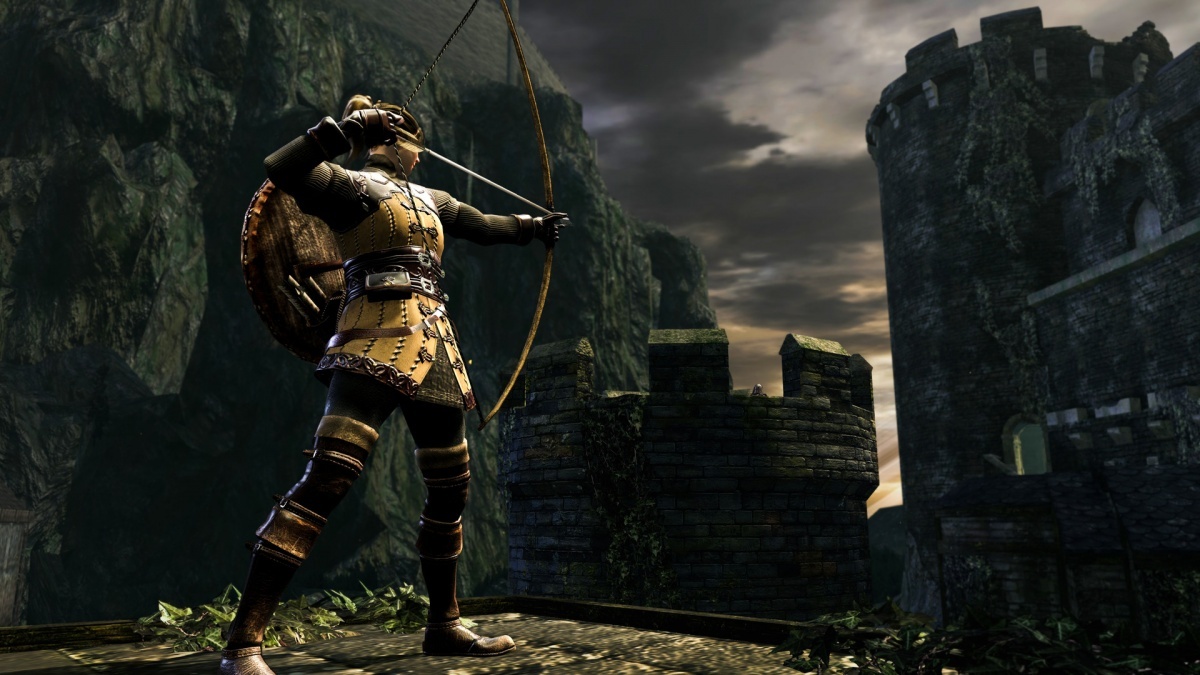Dark Souls Remastered (Nintendo Switch) Review
By Renan Fontes  18.10.2018
18.10.2018

Dark Souls has more or less become known for its difficulty in recent years, but it is not a inherently challenging series. Rather, the franchise simply prioritises patience, mastery, and understanding with greater importance than other videogames. In turn, Dark Souls' difficulty stems less from design meant to challenge its audience and is more a result of how each title is individually designed. With that in mind, however, this has not stopped FromSoft from embracing its reputations for its sequels, almost relegating the original Dark Souls to a unique position where it is not built on a preconceived notion of the series. Seven years later, FromSoft's golden goose returns in the form of Dark Souls Remastered (reviewed previously on PS4 and PC, ready to be analysed under the lens of where the franchise has gone in the past decade.
The original Dark Souls is a particularly interesting instalment for the series in that it remains the most original title to bear the "Souls" moniker. Where other entries in the series, Demon's Souls and Bloodborne included, feature disconnected worlds with a frequently revisitable hub, Dark Souls takes a more geographically interconnected approach in the same vein as a typical Metroidvania. In turn, Firelink Shrine, the game's central hub, ends up being reserved only for shortcuts and for when Chosen Undeads inevitably obtain the ability to warp after Anor Londo. While this does result in audiences forming less of an attachment with Firelink than they would the Nexus, a much stronger familiarity is built with the world of Lordran instead.
As warping is locked until after the halfway point, players are expected to familiarise themselves with shortcuts, set-pieces, and landmarks, so that they understand where they are at all times. The distinct lack of a map likewise encourages players to immerse themselves in each environment; a rather easy task considering the strength of Lordran's visual identity.
On the subject of visuals, the Switch remaster is by far the best of the bunch in regards to general aesthetics. While the PS4, Xbox One, and PC releases all look "better," they don't look like Dark Souls - at least not entirely. The updated assets and lighting effects take too much away from Lordran on an aesthetic level. The Switch remaster smooths the assets out for a crisper image, but it never outright replaces or modifies any of the visuals. Although this may give off the impression that the Switch is home to a lesser remaster, it should be stated that Dark Souls is not a title that needed an extensive makeover. The other remasters go too far in their "upgrades" to the point where Lordran's aesthetic identity is neutered. Whether it is due to technical limitations or deliberate design, this is not an issue on Switch.

This is not to say Remastered is a perfect reiteration of its source material, however. While the title is visually sound, there are notable audio issues. Specifically, audio compression looms over the entire remaster. It isn't particularly game breaking, nor is it significantly worse than the original master, but most audio cues do sound as if they are coming from a vacuum, creating a bit of a disconnect within Lordran's world.
The only other major changes come in the form of quality of life additions. Vamos now has a bonfire placed near him in the Catacombs; previously established covenants can be re-entered via the bonfire menu; and controls can be re-binded. Realistically, there is no need to overhaul the title's foundation. While some modifications would have benefitted the PvP scene, the heart of the Souls series is in its single-player and going overboard with changes would have severely undermined the original's deliberate design.
With that in mind, as a rather straightforward remaster, Remastered does also inherit Dark Souls' pre-existing flaws. Specifically, the main story sees a noticeable dip in quality after Anor Londo. While the title's inherent non-linearity is still present, arguably even more so than in the first half, the level design simply isn't as strong in its last act as it is building up to the battle between Ornstein and Smough.

Not every end-game area is poor, with Duke's Archives standing out as one of the better designed levels in the adventure, but the sense of progression is all but lost at this point. The narrative's first half, while thin, is driven by several key goals that serve to infer the world at large and express just how close to the brink Lordran is.
From ringing the Bells of Awakening to scaling Sen's Fortress in order to reach Anor Londo, the story may not reveal all its beats with the smoothest touch, but the player is given a distinct, changing goal at every turn, with each area expanding the narrative's scope and themes. The last act does not have this same natural flow as it centres itself round a single story beat that, more or less, doesn't say too much about Lordran, but it does admittedly lead into a rather strong and thematically poignant finale.
It is worth mentioning that, even at its lowest point, the adventure at hand never loses its lustre from a gameplay perspective. While the level design may take a hit, combat and exploration are so finely tuned that's easy enough to overlook just how unengaging an area like Lost Izalith actually is. With so many different weapons and builds to choose from, no two play-throughs will naturally wind up the same. There is an incredible amount of customisation available at any given time. While some weapons are better than others, and some stats are of a generally lesser importance, there is no "wrong" way of experiencing the single player. Some builds will result in a more difficult campaign, but everything is viable in the hands of a skilled player.

This is ultimately Dark Souls' greatest strength as a videogame. It intends on offering a challenge, but not to the point where audiences are gated into playing one specific way. Skill and patience will inevitably triumph over any of FromSoft's many obstacles. Remastered is fundamentally the same game it was in 2011, which is realistically all it needed to be. The 2011 action RPG became a classic in the medium for a reason. At its core, the original Dark Souls is not hard. It is comfortable challenging its audience, but it does so fairly. Embodying this philosophy is arguably the single piece of DLC to ever come out of FromSoft: Artorias of the Abyss. Included in Remastered, AotA serves as an almost extended finale for the adventure, adding some much needed quality and context to the original last act.
There is not a single stage or boss in the DLC that does not come out feeling like one of the best of the franchise. Artorias himself went on to redefine how bosses worked in the series, with later titles prioritising humanoid encounters with key phase shifts. Where later entries are guilty of overusing this concept, however, the original knows how to pace itself appropriately, ensuring bosses like Artorias truly feel special in the context of their own game.
It is a balance between pacing and restraint that allows the first Dark Souls to age so gracefully. Good design is good forever, and FromSoft's sophomore action RPG is filled with strong, cohesive design. There is not a moment in the adventure that does not feel deliberate. Even the worst bosses serve distinct purposes from gameplay and narrative perspectives. Remastered may not polish the title's rougher edges, but doing so would have risked damaging the overall experience. Dark Souls Remastered is a safe remaster, almost glaringly so, but why does that have to be a bad thing? Even if it may not be definitive, Dark Souls Remastered is the most authentic interpretation of FromSoft's magnum opus this gen.

Cubed3 Rating
Exceptional - Gold Award

Dark Souls Remastered on Nintendo Switch may be lacking in the same bells and whistles as its current gen counterparts, but that is hardly a bad thing. As a result of the Switch port taking a more reserved approach, due to technical limitations or otherwise, Dark Souls' visual identity has been kept intact. Audio compression does plague the port, but the main game itself is virtually untouched. While this may not result in a definitive version, the Switch port makes for an excellent return, or even first visit, to Lordran. Dark Souls remains a magnificently designed title with a strong visual and narrative sense of self. There was no reason to fix what wasn't broken, and Dark Souls Remastered on Switch understands that perfectly.

![]() 9/10
9/10
![]() 0
(0 Votes)
0
(0 Votes)
 Out now
Out now  Out now
Out now  Out now
Out now  Out now
Out now Comments
Comments are currently disabled

 Sign In
Sign In Game Details
Game Details Subscribe to this topic
Subscribe to this topic Features
Features





 Top
Top

